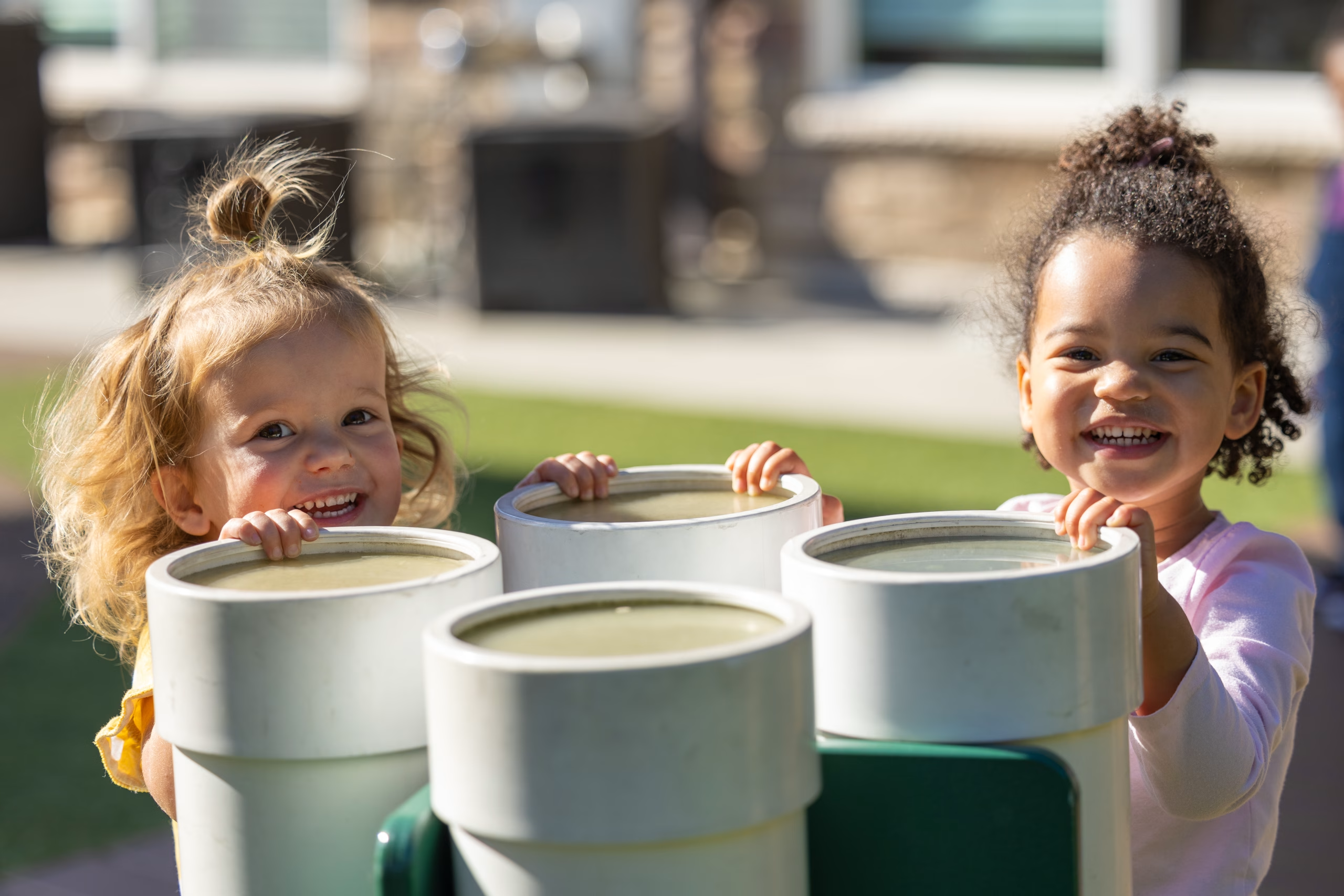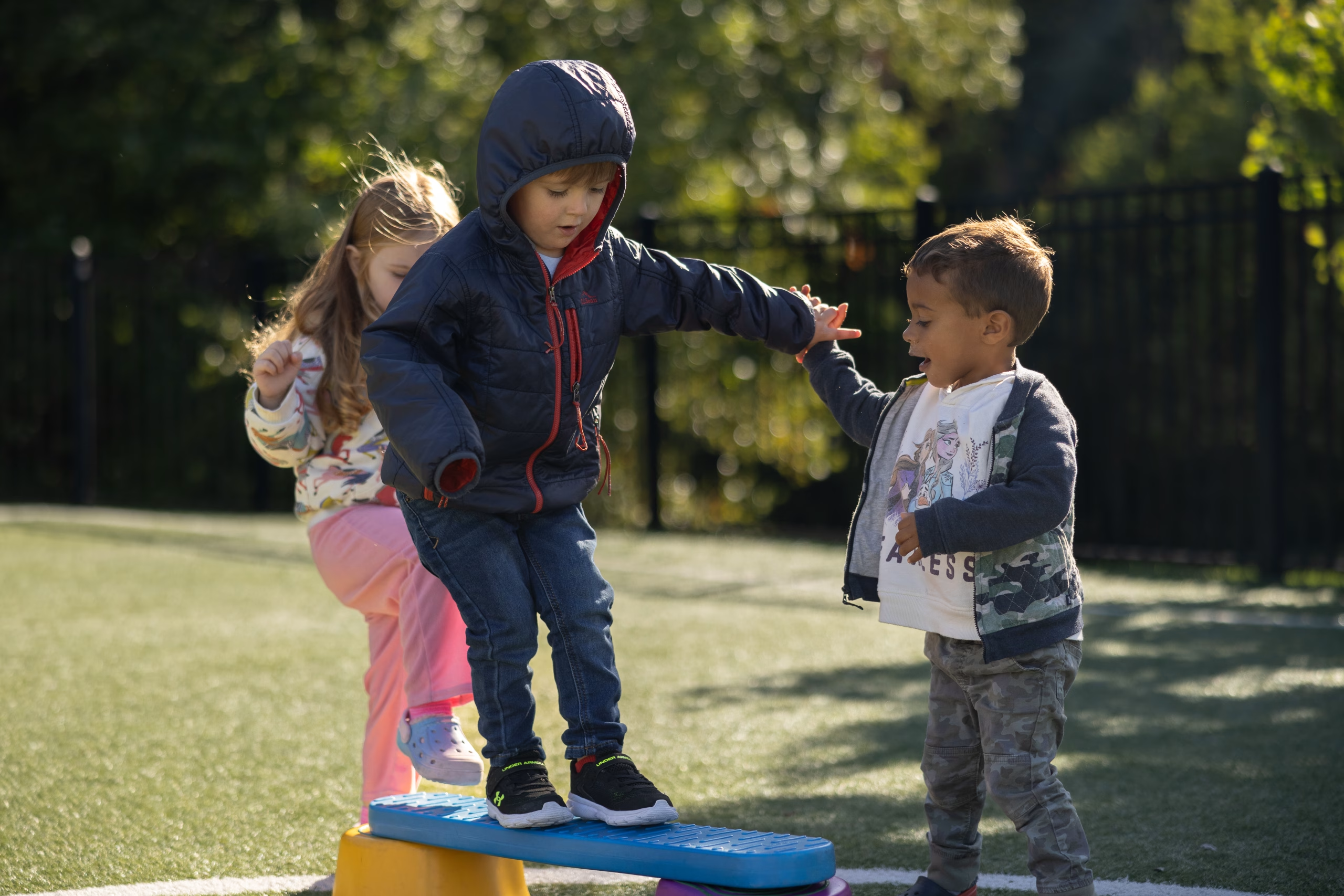
Any parent who has taken a long car trip with the family knows that patience is not something children are born with. “Are we there yet?” “I’m starving!” “I have to go to the bathroom!” Their questions and statements are all delivered with an underlying urgency to make things better NOW.
Life is a waiting game. From the moment we’re born, we’re waiting on something – meals, holidays, other people. Waiting is hard. That’s because patience isn’t something that comes to us naturally.
“It’s not always easy to be patient, even for adults,” said Richard Peterson, Kiddie Academy’s Vice President of Education. “Patience is a learned value. It’s the ability to demonstrate self-control while waiting for an event to occur. It also refers to the ability to remain calm in the face of frustration. It’s a skill that children develop as they mature.”
Patience is a fundamental theme in Kiddie Academy’s Character Education curriculum. Patient children get along better with others because they’re able to take turns. And patient children grow up to become patient adults.
To build patience in children, it needs to be practiced every day. But keep your expectations realistic – especially when working with younger children. You can start with shorter patience-building activities, then increase the duration as children develop a stronger sense of self-control.
Here are some things you can do to teach your children about patience:
Slow your response time – Instant gratification isn’t always necessary. When situations allow it, build in some reasonable waiting periods before responding to the child’s request. You can even use a clock or timer to help them understand that they will need to wait for a specific period of time. And be reliable – if you promise something later, follow through on your promise so they trust that when you say something will happen, it will. This helps them understand and trust that even if you don’t satisfy their needs right away, you’ll take care of it in time.
Do projects that require patience – There are lots of fun activities you can do with children that simply can’t be rushed. Things like working on puzzles or models require you to follow a process to get to the desired end. Gardening is also a great patience-teaching tool. Children will love helping to sow seeds and tending to the plants as they grow into flowers or vegetables over time.
Play games that make waiting more fun – Make waiting fun by playing games. Games like I Spy, 20 Questions, Simon Says, Tic Tac Toe and Hangman can make waiting time fly by.
Personal experience – Share your own personal experience with having to exercise patience. What made you impatient? How did you deal with it? This helps make a personal connection with children, letting them know that you understand how they’re feeling when they’re impatient.
Acknowledge independent thought – Similar to sharing your experiences, ask children to think of situations where they might have to exercise patient behavior. Ask them how they might deal with those situations. We often ask children to think deeply about a situation and make decisions on how they might react. This level of empathy can be challenging but constructive. Acknowledge all answers with a comment that thanks the children for sharing their thoughts. Value those thoughts by writing the children’s words on paper.
Compliments – Recognize the work that children are putting in to learn how to be patient. Acknowledging their efforts helps build self-esteem. Praise them when they wait. It can reinforce their behavior.
Be a role model – Your child looks to you as a role model. Make sure that if you’re teaching patience, you also demonstrate patience in your behavior. Your actions, your language – it all matters.
There are lots of resources available to help you teach children about patience. Here is a list of story books about patience, recommended by Barnes and Noble:
“Waiting” by Kevin Henkes
“Are We There Yet?” by Dan Santat
“Waiting Is Not Easy” by Mo Willems
“The Carrot Seed” by Ruth Krauss and Crockett Johnson
Additionally, here are links to other resources with useful information about teaching patience:
“How to Teach Patience” – Parenting
“5 Tips for Teaching Patience” – Scary Mommy Blog
“Kids and Patience” – Huffington Post
Thank you for reading along, as we work together in raising the next generation of amazing kids!
Looking for more news you can use?
We would love to send you our free monthly newsletter, Parenting Essentials! You’ll receive a newsletter by e-mail, full of parenting advice, ideas and information, as well as articles about emerging trends in educational child care.





